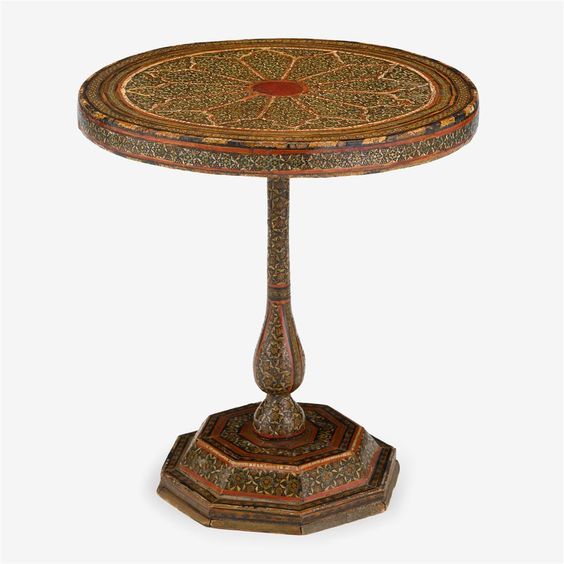 Khatam is an ancient Persian technique of inlaying. It is a type of marquetry where art forms are made by decorating the surface of wooden articles with delicate pieces of wood, bone and metal precisely-cut intricate geometric patterns. Khatamkari refers to the art of crafting a Khatam. Materials used in this craft can be gold, silver, brass, aluminum and twisted wire. Various types of inlaid articles and their quality are known by the size and geometrical designs. Smaller pieces result in a higher value of the artwork.
Khatam is an ancient Persian technique of inlaying. It is a type of marquetry where art forms are made by decorating the surface of wooden articles with delicate pieces of wood, bone and metal precisely-cut intricate geometric patterns. Khatamkari refers to the art of crafting a Khatam. Materials used in this craft can be gold, silver, brass, aluminum and twisted wire. Various types of inlaid articles and their quality are known by the size and geometrical designs. Smaller pieces result in a higher value of the artwork.
In Safavid era, Khatam-kari was very popular and princes learned this technique alongside the art of music or painting. The inlaid-ornamented rooms at the Saadabad Palace and the Marble Palace in Tehran are among masterpieces of this art. Integrating techniques from China and improving it with Persian know-how, this craft existed for more than 700 years and is still practiced in Shiraz, Isfahan, and Tehran. The art of inlaid and sudorific woodwork is undertaken in the workshops of the Cultural Heritage Organization of Iran, as well as in private workshops.
At times, cylinders are cut into shorter cylinders and then compressed and dried between two wooden plates, before being sliced for the last time, in 1 mm wide tranches. These sections are ready to be plated and glued on the object to be decorated, before lacquer finishing.
The tranche can also be softened through heating in order to wrap around objects. Many objects can be decorated in this fashion, including jewelry boxes, chessboards, pipes, desks, frames or musical instruments.